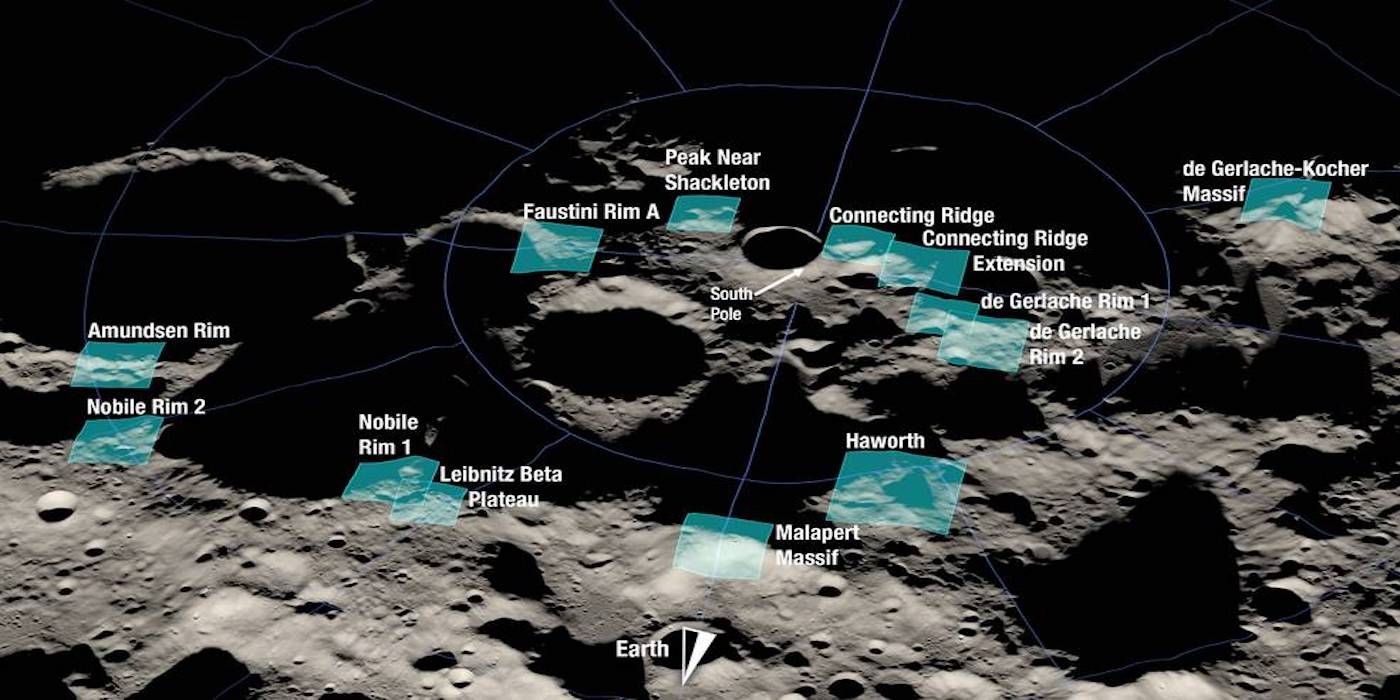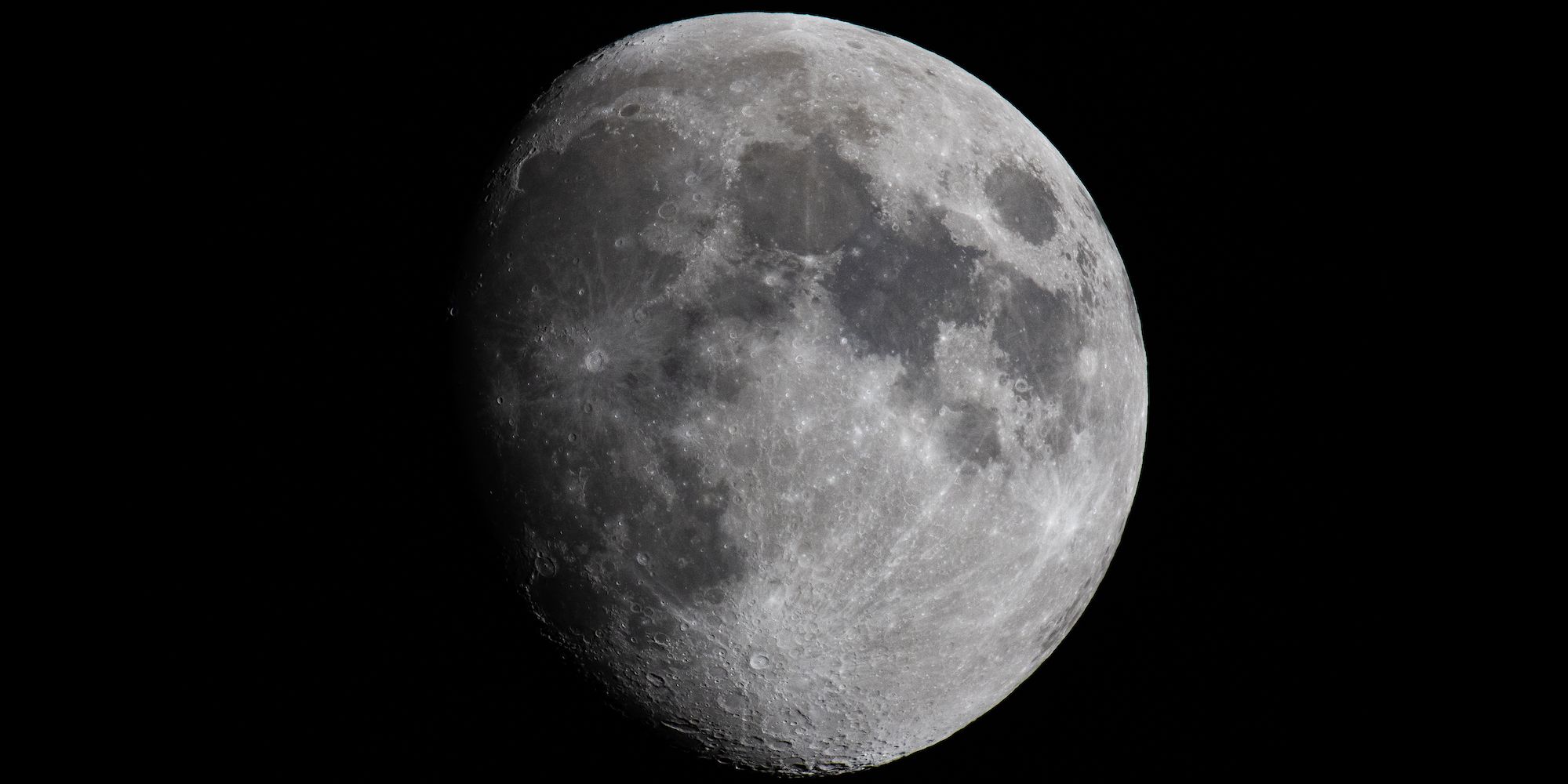NASA has identified thirteen potential landing sites for the Artemis mission that will deliver astronauts to the lunar surface, all of which surround the moon’s South Pole. The lunar landing, Artemis III, is tentatively scheduled for 2025, and space enthusiasts are eagerly following along with every step of the planning process.
The first stage of the Artemis mission is scheduled to launch at the end of this month, laying the groundwork for the first humans to set foot on the Moon since the Apollo 17 mission in 1972. In the half-century since, technology has advanced dramatically, and this mission hopes to break records for how long people can remain in the moon’s hostile environment. To accomplish that goal, NASA has been actively commissioning partners to help develop new technologies to extract essential resources, including water, oxygen, and hydrogen, from regolith. After the initial Artemis reconnaissance missions, NASA’s long-term goal with Artemis is to create a lunar base that can serve both as a research facility and as a way station for even more distant space exploration.
In an Aug. 19 press conference, NASA announced the thirteen landing-site candidates with much fanfare. The Artemis III landing may take place at Faustini Rim A, Peak Near Shackleton, Connecting Ridge, Connecting Ridge Extension, de Gerlache Rim 1, de Gerlache Rim 2, de Gerlache-Kocher Massif, Haworth, Malapert Massif, Leibnitz Beta Plateau, Nobile Rim 1, Nobile Rim 2, or Amundsen Rim. The timing of the launch window informs where the spacecraft will be able to land, so the final site will not be narrowed down until more is known about the launch schedule. These sites are informed by data from the Lunar Reconnaissance Orbiter. The landing zones are all clustered within six degrees of latitude of the Moon’s South Pole, which is an area that is shrouded in shadow, and which is of both scientific mystery and interest. Mark Kirasich, deputy associate administrator for the Artemis Campaign Development Division at NASA Headquarters in Washington, emphasized the region’s importance, noting that the Artemis mission “will be unlike any mission that’s come before as astronauts venture into dark areas previously unexplored by humans and lay the groundwork for future long-term stays.” The area’s darkness has likely protected the Moon’s most important resource for humans seeking to build long-term lunar colonies: water.
Water On The Moon
Humans on the Moon, like humans everywhere, need water to survive. Without a water source on the Moon, it’s hard to imagine how humans could build a successful long-term outpost. Perhaps for this reason, the existence of water on the moon has been a source of constant speculation, and its origins and behaviors on the lunar surface remain mysterious. Because the moon lacks much atmosphere, popular belief dating back to the 1800s held that any water on the moon was likely to burn off when exposed to sunlight. In the mid-20th century, however, scientists began to suspect that the Moon might boast water in the form of ice in the Moon’s permanently dark regions, and this theory was confirmed in 2018. In 2020, new data from the Strategic Observatory for Infrared Astronomy (SOFIA) revealed that even in sunlit regions, enough water to fill a 12-ounce bottle was present in a single cubic meter of lunar soil. The discovery strengthened evidence that a long-term lunar base was feasible. By focusing on landing astronauts at the South Pole, the Artemis mission is seeking a lunar landing site that may maximize access to those reserves.
In the months to come, NASA will solicit feedback on site selection from the broader scientific community, and officials have said they may identify even more potential landing sites after public input. In the meantime, NASA's Artemis III launch draws ever closer, and feels more real with every new update.
Source: NASA


